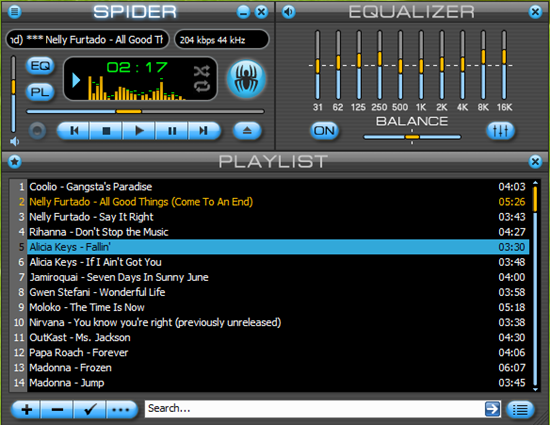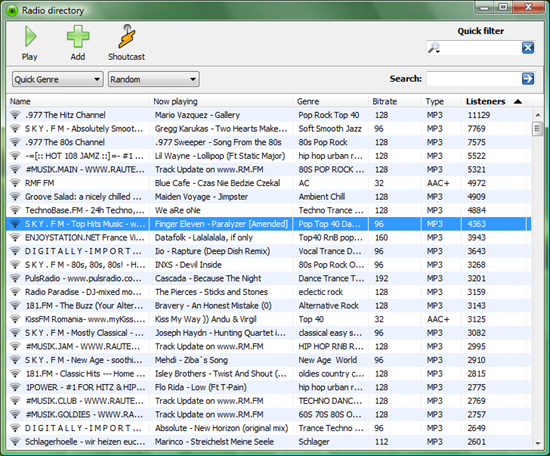Looking for a nice and sleek audio player with tons of functionality that is still easy to use? Spider Player fits the bill perfectly.
First of all the player looks great. It has a simple and clean layout, with buttons at just the right places. Usually media players or any software, for that matter, that comes with lots of features, either tries to put a button for every function on the main window and clutter up the interface or goes the minimalist way and hides every option in menus. Both are bad from a design point of view. Spider Player does a great job in creating a fine balance between the two.

Spider Player supports nearly thirty audio formats including most popular ones. You can use it to play music from your audio collection, stream files from the Internet and listen to Internet radio. You can also use it rip CDs, convert any supported files to different formats and record Internet radio (limitations in place). All essential features, like ten-band graphic equalizer with various presets, local and global hotkeys support, playlist and favorites editors, are present too.
As I mentioned, the support for audio formats is comprehensive - MP1, MP2, MP3, MP4, M4A, AAC, AAC+, AC3, MPC, MP+, MPP, Ogg Vorbis, FLAC, Ogg FLAC, TTA, APE, WavPack, Speex, WAV, CDDA, WMA, MID, RMI, KAR, S3M, XM, MOD, IT, MO3, MTM, UMX. You can also rip audio CDs and convert any supported audio format file into MP3, WMA, OGG, FLAC or Wav. The basic version allows to encode only one track at a time, while PRO version can be used for batch encoding.

With Spider Player you can choose from any of the thousands of Shoutcast and Icecast radio channels. The PRO version allows unlimited recording of any radio steam, while the basic version allows recording of up to 5 minutes. If you want to record a single song, those 5 minutes should suffice. But of course, there are other restriction-free streaming recorders available.
A few nice extra are the built-in ID3 tag editor, a favorites manager, 32-bit sound processing with DSP effects that also supports Winamp DSP plugins, visualizations, customizable hotkeys, skins and lost of other customizability options.
Spider Player is one of the best newcomers, and definitely a must try.
Related:
Style Jukebox - The next generation media player
Winyl – A simple but attractive new audio player
MusicCubeOne - A simple music player

Thanks for sharing, going to give it a try.
ReplyDelete